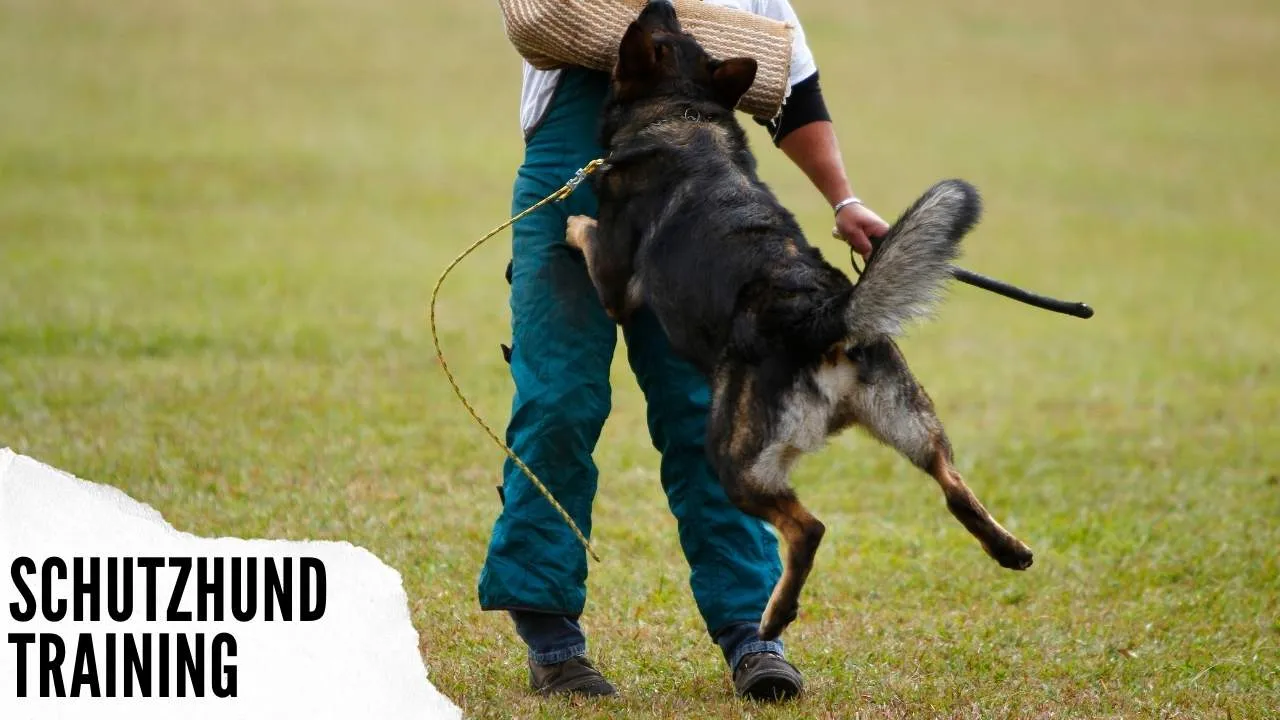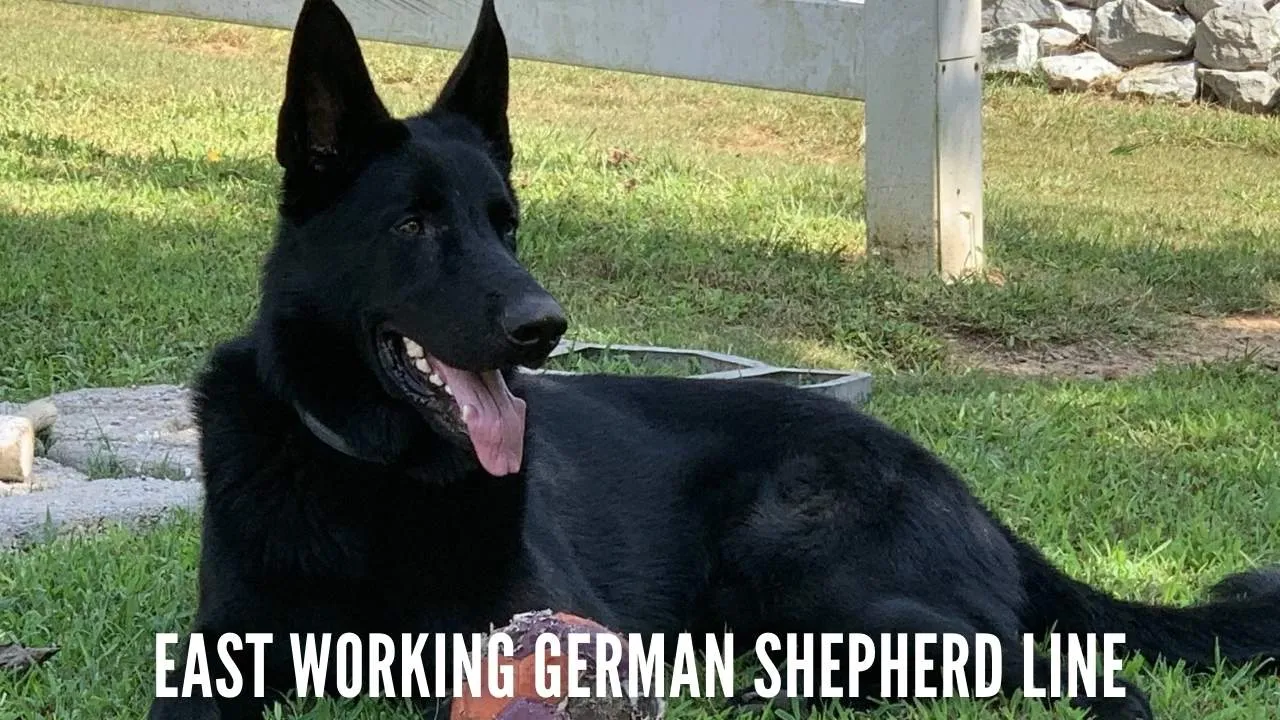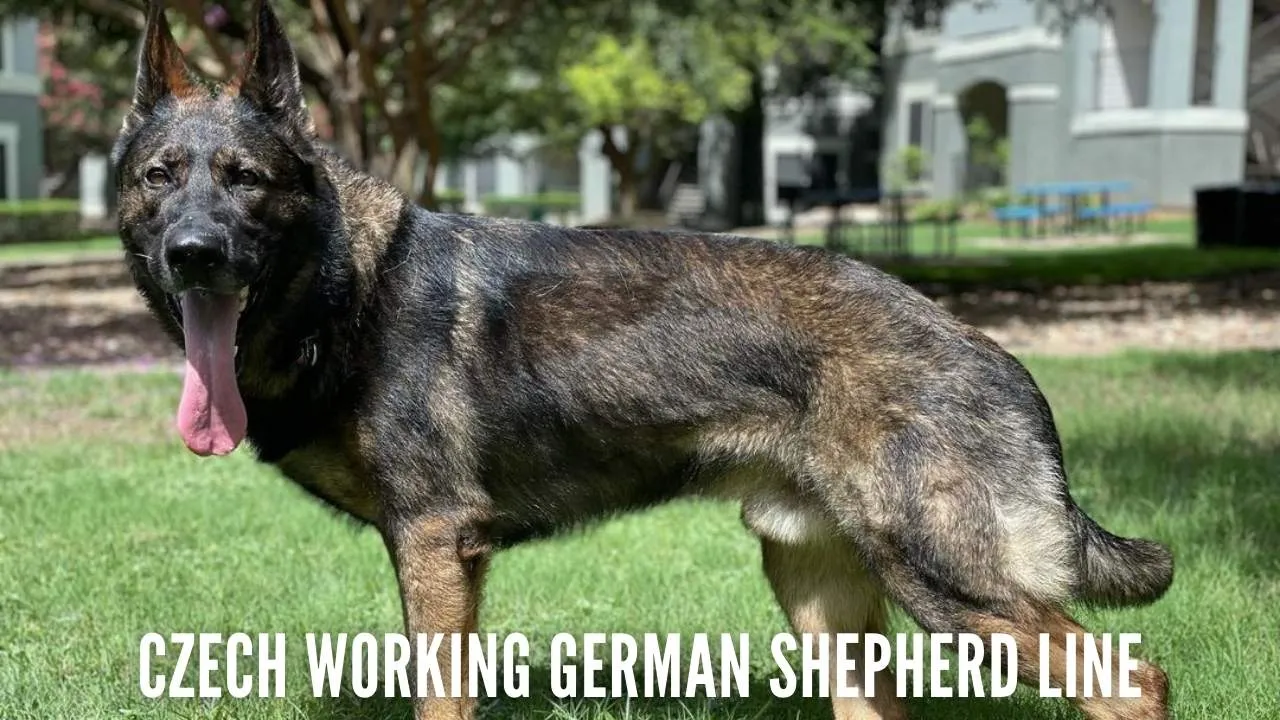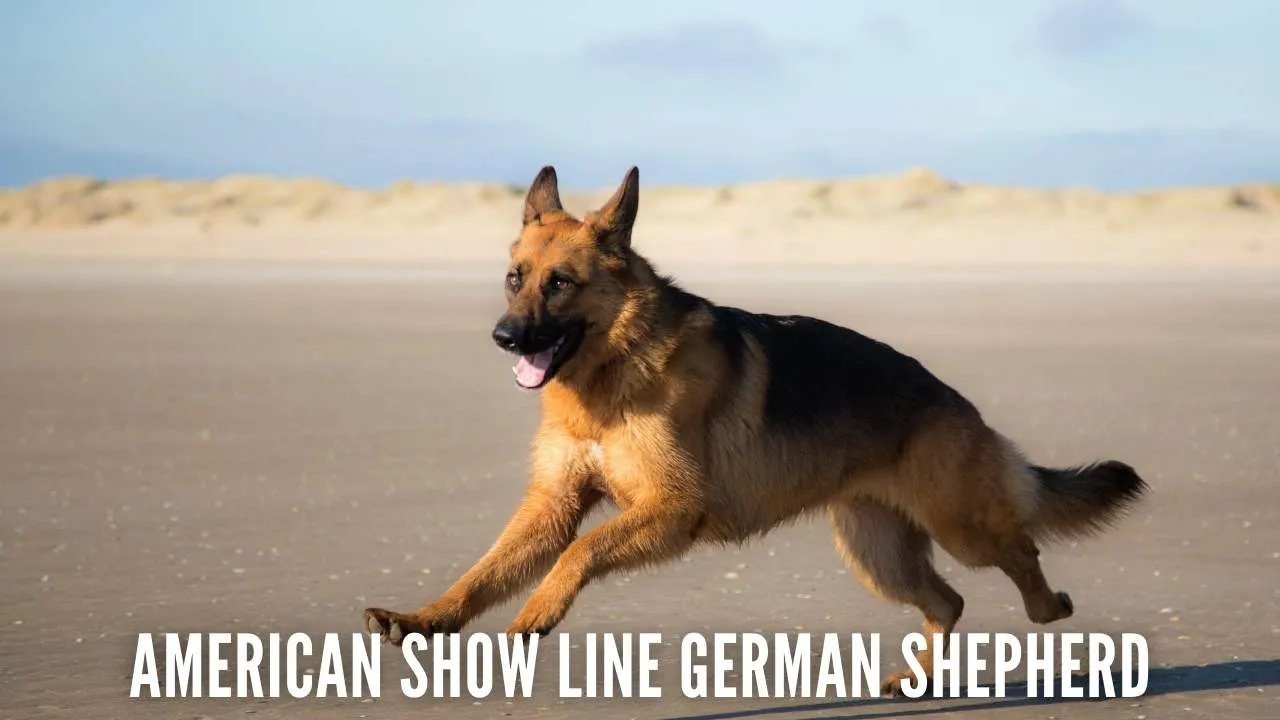The German Shepherd Dog (GSD) is celebrated worldwide for its intelligence, loyalty, and versatility. Many enthusiasts often discover there are more varieties of this magnificent breed than initially realized. Developed in the late 1800s by Max von Stephanitz, with Horand von Grafrath as the first registered German Shepherd, the breed has evolved into several distinct types, each with unique characteristics and purposes. This article will delve into the various types of German Shepherds, highlighting their differences, roles, and distinguishing features, often accompanied by pictures of short haired German Shepherds and other variations.
Understanding the different bloodlines and their specific traits is crucial for anyone considering bringing one of these incredible dogs into their home or appreciating their historical significance. From dedicated working dogs to loving family companions, German Shepherds showcase a remarkable spectrum of capabilities and temperaments.
Understanding German Shepherd Bloodlines: Working vs. Show
German Shepherds are broadly categorized into two main bloodlines: the working line and the show line. Each category, in turn, encompasses sub-categories, catering to distinct purposes and preferences. The working line is typically employed in demanding roles such as military, police, and specialized forces, while the show line is often a more amenable choice for families, known for its friendly demeanor.
There are generally five recognized types of German Shepherds:
- East German Working Line (DDR)
- West German Working Line
- Czech German Shepherd
- American/Canadian Show Line
- West German Show Line (European Showline)
These categories reflect breeding priorities, with working lines emphasizing drive, endurance, and physical prowess for demanding tasks, and show lines focusing on conformation to breed standards, temperament, and suitability as companions.
 Working line vs show line German Shepherd comparison
Working line vs show line German Shepherd comparison
Despite being the same breed, working and show line German Shepherds exhibit notable differences in behavior, health predispositions, and physical capabilities. Historically, the German Shepherd was bred as a herding dog, renowned for its loyalty. Their proved power and dedication quickly led to their deployment as military dogs during World War I and World War II. Following the wars, they transitioned into roles as police dogs and service animals, showcasing their adaptability and intelligence.
The breed’s versatility also extends to competitive sports, with events like Schutzhund Championships, tracking competitions, agility trials, and dog show championships highlighting their varied talents. Each German Shepherd type brings its own set of advantages and challenges, which prospective owners should consider.
 Schutzhund training with a German Shepherd dog
Schutzhund training with a German Shepherd dog
The Robust Working Line German Shepherds
Working line German Shepherds are characterized by their intense drive and an innate love for hard work. These dogs possess exceptional stamina, capable of working for extended periods without significant fatigue. Owners of working line GSDs typically dedicate several hours daily (2-4 hours) to engage their dogs in mentally and physically stimulating activities. These are highly energetic dogs that require substantial investment in terms of time, energy, and resources.
For first-time German Shepherd owners, it is generally recommended to opt for a show line GSD, as the working line’s intense needs can be overwhelming without prior experience. Insufficient mental and physical stimulation can lead to destructive behaviors, which can be challenging to manage. Furthermore, working line German Shepherds are often regarded as healthier, exhibiting a lower propensity for common genetic conditions such as hip and elbow dysplasia due to a more consistent gene pool and a physically active lifestyle.
The Sociable Show Line German Shepherds
In contrast, the show line German Shepherd is known for its more amicable disposition and moderate energy levels. This type is frequently chosen by first-time dog owners and families seeking a German Shepherd companion. Their appeal stems from several factors: they are generally friendlier, require less intensive daily commitment compared to working lines, and often make excellent companions.
While show-line German Shepherds can certainly be trained for various tasks, working lines typically outperform them in highly demanding jobs due to their specialized breeding for performance. However, this distinction doesn’t imply one is superior to the other; they simply serve different purposes. The show line’s temperament often makes it a better fit for a family environment, offering a stable and gentle presence. For new German Shepherd owners, a show line typically proves to be a more manageable and rewarding experience, leading to a fulfilling companionship.
In-Depth Look at Working Line German Shepherd Types
The working line category is further divided into three distinct types: the West German Working Line German Shepherd, the East German Working Line German Shepherd (also known as Deutsches Demokratische Republik – DDR), and the Czech German Shepherd. Each of these lineages was developed under specific historical and geographical circumstances, leading to unique attributes.
West German Working Line German Shepherd
The West German Working Line German Shepherd emerged following the division of Germany during the Cold War. With the construction of the Berlin Wall in 1961, German Shepherd breeders were also separated, leading to the development of distinct East and West German lines. This particular line is often considered the closest modern descendant to Max von Stephanitz’s original German Shepherd.
These dogs are characterized by their strong working drive and high energy requirements. Owners must provide ample exercise and mental stimulation to prevent behavioral issues. Historically, there was a greater chance for West German Working Line German Shepherds to be prone to hip dysplasia compared to their Eastern counterparts, emphasizing the importance of careful breeding and appropriate dietary supplements for their joint health.
 West Working Line German Shepherd dog
West Working Line German Shepherd dog
Common Health Concerns:
- Mild: Allergies, digestive problems, skin allergy issues, cardiac disease, degenerative myelopathy (DM).
- Serious: Hip dysplasia, elbow dysplasia, eye disorders, epilepsy, bloat/gastric torsion.
| West German Working Line German Shepherd Characteristics | |
|---|---|
| Price | $3,000-$9,000 |
| Height | Females: 22-24″ (56-61cm); Males: 24-26″ (61-66cm) |
| Colors | Black & Red, Black & Tan, Bi-Color |
| Weight | Females: 50-70lbs (23-31kg); Males: 65-90lbs (30-40kg) |
| Lifespan | 12-15 years |
| Suitable for | Family or working dogs |
| Temperament | Dedicated, confident, obedient, protective, and energetic |
| Exercise needs | 2-4 hours daily |
| Popularity scale | 5/10 |
East German Working Line German Shepherd (DDR)
The East German Working Line German Shepherd, or DDR, also arose from the political division of Germany. Its name, derived from the Deutsche Demokratische Republik, reflects its origins. The breeding program for these dogs was specifically tailored to meet the security needs of East Germany, focusing on traits like strength, speed, and intelligence, which made them effective “war tools” during World War II.
Today, DDR German Shepherds are predominantly employed as service and working dogs for police, military, and other special forces, although they are also popular among enthusiasts of dog sports. Owning a DDR GSD is a significant responsibility, demanding substantial time, training, and financial investment. Their biting power can reach up to 230 PSI, underscoring their strength, but they are equally known for their profound loyalty. East German Working Line GSDs are more energy-driven than their West German counterparts, requiring at least 2 hours of daily exercise in addition to regular walks.
 East Working Line German Shepherd dog (DDR)
East Working Line German Shepherd dog (DDR)
Common Health Concerns:
- Mild: Allergies, digestive problems, skin allergy issues, cardiac disease.
- Serious: Hip dysplasia, elbow dysplasia, eye disorders, epilepsy.
| East German Working Line German Shepherd Characteristics | |
|---|---|
| Price | $4,000-$7,500 |
| Height | Females: 22-24″ (56-61cm); Males: 24-26″ (61-66cm) |
| Colors | Black & Red, Sable, Bi-Color, Black |
| Weight | Females: 50-70lbs (23-31kg); Males: 65-90lbs (30-40kg) |
| Lifespan | 12-14 years |
| Suitable for | Family or working dogs |
| Temperament | Assertive, fearless, vigilant, hard-working, and devoted |
| Exercise needs | 2-4 hours daily |
| Popularity scale | 5/10 |
Czech German Shepherd Dog
The Czech Working Line German Shepherd, also known as the Czechoslovakian Shepherd, originated in the communist Czech Republic. These dogs are highly driven and share a similar athletic frame and straighter back with other working line GSDs, enabling them to excel in physically demanding tasks. Their breeding began in 1955 at a kennel operated by the Czechoslovakian Army’s Pohranicni Straze (Border Control) division, predominantly from DDR German Shepherds. This lineage gained popularity as a family dog after German reunification.
Czech German Shepherds are admired for their strong work ethic, courage, and keen ability to learn. They are typically even more driven than both West and East German Working Line GSDs, making them exceptional working dogs and suitable family companions for active households. Like other working lines, they require 2-4 hours of daily exercise and thrive in activities like Schutzhund, agility, and tracking. While robust, they can be prone to certain congenital diseases.
 Czech Working Line German Shepherd dog
Czech Working Line German Shepherd dog
Common Health Concerns:
- Mild: Cataracts, skin allergies, food allergies, corneal dystrophy.
- Serious: Bloat, hip dysplasia, aortic stenosis, cardiomyopathy, osteochondrosis.
| Czech Working Line German Shepherd Characteristics | |
|---|---|
| Price | $3,000-$6,000 |
| Height | Females: 22-24″ (56-61cm); Males: 24-26″ (61-66cm) |
| Colors | Black & Tan, Sable, Bi-Color |
| Weight | Females: 50-70lbs (23-31kg); Males: 65-90lbs (30-40kg) |
| Lifespan | 12-15 years |
| Suitable for | Family or working dogs |
| Temperament | Driven, versatile, determined, responsive, and reliable |
| Exercise needs | 2-4 hours daily |
| Popularity scale | 6/10 |
Exploring Show Line German Shepherd Types
The show line German Shepherds are specifically bred for conformation shows, emphasizing adherence to breed standards in appearance and temperament. These lines offer a more moderate energy level, making them excellent companions for many families and first-time owners.
American/Canadian Show Line German Shepherd
Often referred to as AKC lines in the United States, these German Shepherds are bred primarily for competitive dog shows. The breed gained significant popularity in North America after a GSD won a major dog competition in the early 20th century. While these dogs retain the working spirit inherent to the breed, their energy levels are typically lower than working lines. For first-time German Shepherd owners seeking german shepherd puppies for sale under 500, this line often presents a more manageable option.
American/Canadian show lines typically require about 60-90 minutes of daily training, in addition to regular walks, a stark contrast to the 2-4 hours needed for working lines. Despite being generally healthy, this type can be prone to hip and elbow dysplasia, degenerative myelopathy, and bloat. Owning any German Shepherd involves a significant financial commitment for quality food, supplements, and equipment. This type is highly suitable for families, good with children and other pets, and renowned for its extreme loyalty. They also excel in various dog sports such as agility, obedience, and tracking.
 American Show Line German Shepherd dog
American Show Line German Shepherd dog
Common Health Concerns:
- Mild: Cataracts, skin allergies, food allergies, corneal dystrophy.
- Serious: Gastric Dilatation-Volvulus (GDV) or Bloat, hip dysplasia, elbow dysplasia, cardiomyopathy, osteochondrosis, aortic stenosis.
| American/Canadian Show Line German Shepherd Characteristics | |
|---|---|
| Price | $2,000-$4,000 |
| Height | Females: 22-24″ (56-61cm); Males: 24-26″ (61-66cm) |
| Colors | Black & Tan, Black & Red, Black & Cream |
| Weight | Females: 50-70lbs (23-31kg); Males: 65-90lbs (30-40kg) |
| Lifespan | 8-12 years |
| Suitable for | Family or working dogs |
| Temperament | Stable, predictable, calm, gentle, and friendly |
| Exercise needs | 1-2 hours daily |
| Popularity scale | 8/10 |
West German Show Line German Shepherd Dog
The West German Show Line is often considered the closest to Max von Stephanitz’s original dog, sharing a strong connection to the breed’s foundational standards. While available in both show and working lines, the show line is more prevalent due to its appearance being highly regarded as the breed standard. These dogs typically have a more slanted back compared to East German Shepherds and are not as physically robust, yet they maintain a sturdy build.
When compared to the American Show Line, West German Show Lines tend to be more active and possess a greater drive for training and protection. They represent an excellent choice for first-time German Shepherd or dog owners, making wonderful family dogs due to their loyalty, protectiveness, and love for companionship. Despite their imposing appearance, they are generally friendly, especially with children, though responsible supervision is always necessary. An estimated 60-120 minutes of daily activity, beyond walks, is recommended to keep them physically and mentally healthy. Choosing a black and tan working line German Shepherd can provide you with a dog that is ready to participate in a variety of activities. Without proper exercise and engagement, these intelligent dogs can become destructive or depressed.
 European Show Line German Shepherd dog
European Show Line German Shepherd dog
Common Health Concerns:
- Mild: Cataracts, skin allergies, food allergies, corneal dystrophy, osteochondrosis.
- Serious: Gastric Dilatation-Volvulus (GDV) or Bloat, hip dysplasia, elbow dysplasia, cardiomyopathy, aortic stenosis.
| West German Show Line German Shepherd Characteristics | |
|---|---|
| Price | $2,000-$5,000 |
| Height | Females: 22-24″ (56-61cm); Males: 24-26″ (61-66cm) |
| Colors | Black & Tan, Black & Red, Black & Cream |
| Weight | Females: 50-70lbs (23-31kg); Males: 65-90lbs (30-40kg) |
| Lifespan | 8-12 years |
| Suitable for | Family or working dogs |
| Temperament | Confident, poised, obedient, composed, and graceful |
| Exercise needs | 1-2 hours daily |
| Popularity scale | 8.5/10 |
West German Show Line vs. American Show Line: A Closer Look
The most striking visual difference between German-bred and American Show Line German Shepherds lies in their posture. American German Shepherds typically exhibit a more sloped back and severely angled hip joints, contributing to a longer appearance and the “flowing gait” often admired in American show rings. German-line Shepherds, conversely, generally have a straighter back, indicating a more balanced and robust stance. These lines also differ in size and color, with German Shepherds often being larger and darker.
Regarding health, American German Shepherds, particularly due to their slanting back, can be more prone to hip dysplasia, along with bloat and allergies. German show lines, with their straighter and more stable conformation, tend to have a lower incidence of hip problems and are often considered more stable and healthier due to standardized breeding and rigorous training regimens.
Understanding German Shepherd Size: The Largest Breeds
Among the various types, the West German Show Line German Shepherd is most commonly observed as the largest. Females typically stand 23 to 25 inches at the shoulder and weigh 55 to 75 pounds, while males measure 25 to 27 inches and weigh 70 to 95 pounds on average. It is a common misconception that the King Shepherd is a type of German Shepherd; in reality, King Shepherds are a distinct mixed breed, developed in the 1990s by Shelley Watts-Cross and David Turkheimer. They are a blend of German Shepherd, Alaskan Malamute, and sometimes Great Pyrenees.
King Shepherds are notably larger than any German Shepherd type. Females typically reach 25 to 27 inches in height and 75 to 110 pounds, with males standing 27 to 31 inches and weighing 90 to 150 pounds. Known for their confidence, strength, and gentle nature, King Shepherds are devoted family companions and versatile working dogs, excelling in roles from herding to rescue work. They are recognized by several rare breed associations, including the American Rare Breed Association (ARBA) and the American King Shepherd Club (AKSC).
German Shepherd Coat Colors and Markings
The American Kennel Club (AKC) recognizes German Shepherd dogs in 11 different coat colors, showcasing a wide range of aesthetic variations. Preferred colors are strong and rich, with pale, washed-out colors, blues, or livers being considered serious faults. White German Shepherds are typically disqualified in AKC conformation events.
| Description | Standard color | Code |
|---|---|---|
| Black | ✓ | 007 |
| Black & Cream | ✓ | 010 |
| Black & Red | ✓ | 014 |
| Black & Silver | ✓ | 016 |
| Black & Tan | ✓ | 018 |
| Blue | ✓ | 037 |
| Gray | ✓ | 100 |
| Liver | ✓ | 123 |
| Sable | ✓ | 164 |
| White | 199 | |
| Bi-Color | ✓ | 454 |
Source: AKC (American Kennel Club)
Disqualifications for conformation shows can include cropped or hanging ears, noses not predominantly black, undershot jaws, blue eyes, docked tails, aggressive behavior, long-haired coats (in some standards), lack of black pigment around eyes, mouth, or nose, and specific faulty colors such as blue, liver, white, and panda. Issues arising from poor breeding, particularly concerning faulty coat colors, can sometimes lead to serious health problems. The debate over whether white German Shepherds are purebred remains a complex and ongoing discussion among breeders and owners. If you are interested in a white German Shepherd with blue eyes, it is important to understand these specific breed standards and genetic implications.
Final Words
Regardless of their specific type, all German Shepherds share remarkable similarities in personality. They are consistently loyal, highly intelligent, and possess a strong drive to work, thriving on companionship and purposeful activity. Owning a German Shepherd is a deeply rewarding experience, but it also entails significant responsibility and commitment. The initial cost, ongoing expenses for quality food and supplements, and the considerable time investment required for exercise and training can be substantial.
The German Shepherd is an ideal companion for individuals and families prepared to dedicate their time and energy to training and engaging with their dog. The bond forged through consistent work and mutual respect will not only result in a well-adjusted and healthy canine partner but can also profoundly enrich an owner’s life, fostering a sense of purpose and improving daily well-being. Embrace the challenge, and you will discover the unparalleled joy and loyalty a German Shepherd brings.
